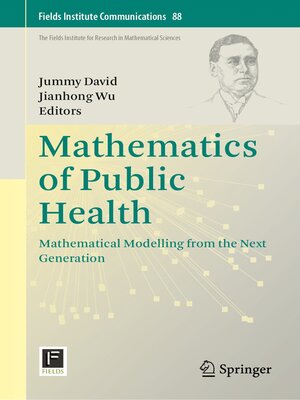Mathematics of Public Health
ebook ∣ Mathematical Modelling from the Next Generation · Fields Institute Communications
By Jummy David

Sign up to save your library
With an OverDrive account, you can save your favorite libraries for at-a-glance information about availability. Find out more about OverDrive accounts.
Find this title in Libby, the library reading app by OverDrive.



Search for a digital library with this title
Title found at these libraries:
| Library Name | Distance |
|---|---|
| Loading... |
This volume addresses SDG 3 from a mathematical standpoint, sharing novel perspectives of existing communicable disease modelling technologies of the next generation and disseminating new developments in modelling methodologies and simulation techniques. These methodologies are important for training and research in communicable diseases and can be applied to other threats to human health. The contributions contained in this collection/book cover a range of modelling techniques that have been and may be used to support decision-making on critical health related issues such as:







